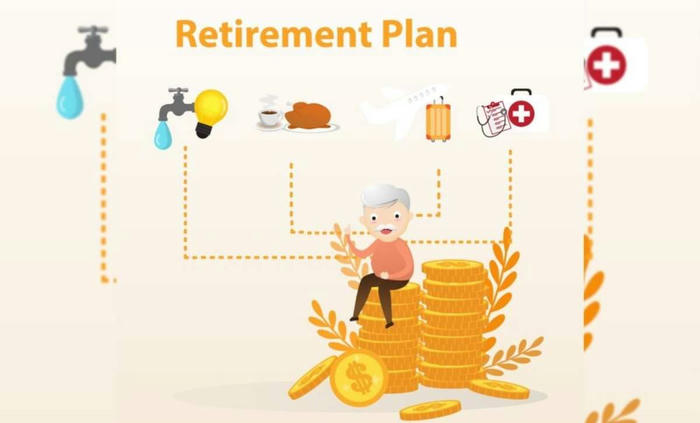Maximizing Your Golden Years: Smart Strategies for Pension Investment
Planning for retirement is one of the most important financial decisions you’ll ever make. Your pension is a cornerstone of your retirement strategy, and how you invest it can significantly impact your quality of life in your golden years. Whether you’re just starting to think about retirement or are already enjoying it, understanding how to maximize your pension investments is key to securing a comfortable and stress-free future. Here’s a guide to smart strategies for pension investment.
Understanding Pension Investments
What is a Pension?
A pension is a retirement plan that provides a steady income after you stop working. It’s typically funded by contributions from both you and your employer during your working years. The way you invest these funds can determine how much income you’ll have in retirement.
Types of Pension Plans
There are two main types of pension plans: defined benefit plans and defined contribution plans.
- Defined Benefit Plans: These guarantee a specific payout upon retirement, based on factors like salary and years of service.
- Defined Contribution Plans: These depend on how much you and your employer contribute, as well as the performance of your investments.
Why Pension Investment Matters
Investing your pension wisely can help your savings grow over time, ensuring you have enough to cover living expenses, healthcare, and leisure activities in retirement. According to the Employee Benefit Research Institute, 64% of workers feel confident about having enough money for a comfortable retirement, but only 18% have actually calculated how much they’ll need.

Key Strategies for Pension Investment
Start Early and Contribute Regularly
The earlier you start contributing to your pension, the more time your investments have to grow. Even small, regular contributions can compound significantly over time. For example, contributing $200 a month starting at age 30 could grow to over $200,000 by age 65, assuming a 6% annual return.
Diversify Your Portfolio
Diversification is one of the most effective ways to manage risk and maximize returns. Spread your investments across different asset classes, such as stocks, bonds, and real estate, to reduce the impact of market fluctuations. A well-diversified portfolio can help you achieve steady growth while minimizing potential losses.
Consider Your Risk Tolerance
Your risk tolerance depends on factors like your age, financial goals, and comfort with market volatility. Younger investors can typically afford to take more risks, as they have more time to recover from potential losses. As you approach retirement, it’s wise to shift toward more conservative investments to protect your savings.

Maximizing Pension Growth
Take Advantage of Employer Contributions
If your employer offers a matching contribution to your pension plan, make sure you’re contributing enough to get the full match. This is essentially free money that can significantly boost your retirement savings.
Rebalance Your Portfolio Regularly
Over time, your investment allocation may drift from your original plan due to market performance. Rebalancing your portfolio—adjusting your investments to maintain your desired asset allocation—can help you stay on track with your financial goals.
Invest in Low-Cost Funds
High fees can eat into your investment returns over time. Look for low-cost index funds or exchange-traded funds (ETFs) that offer broad market exposure with minimal expenses. According to a Vanguard study, low-cost funds can save investors thousands of dollars over the long term.
Planning for Retirement Income
Estimate Your Retirement Needs
To determine how much you’ll need in retirement, consider factors like living expenses, healthcare costs, and leisure activities. A common rule of thumb is to aim for 70-80% of your pre-retirement income, but this can vary depending on your lifestyle.
Understand Withdrawal Strategies
When you retire, you’ll need a plan for withdrawing funds from your pension. The 4% rule is a popular guideline, suggesting that you withdraw 4% of your savings annually to ensure your money lasts throughout retirement. However, this may need to be adjusted based on market conditions and your specific needs.
Consider Annuities
An annuity is a financial product that provides a guaranteed income stream for life. It can be a useful tool for ensuring you don’t outlive your savings. However, annuities come with fees and restrictions, so it’s important to weigh the pros and cons before investing.

Common Mistakes to Avoid
Starting Too Late
Delaying your pension contributions can significantly reduce the amount you’ll have in retirement. Even if you’re close to retirement age, it’s never too late to start saving and investing.
Failing to Diversify
Putting all your money into one type of investment can expose you to unnecessary risk. Diversification helps protect your savings from market downturns.
Ignoring Inflation
Inflation can erode the purchasing power of your savings over time. Make sure your investments include assets that have the potential to outpace inflation, such as stocks or real estate.
Conclusion
Investing your pension wisely is essential for securing a comfortable and fulfilling retirement. By starting early, diversifying your portfolio, and planning for retirement income, you can maximize your savings and enjoy your golden years with peace of mind. Remember, the choices you make today will shape your financial future, so take the time to develop a strategy that works for you. With careful planning and smart investments, you can turn your retirement dreams into reality.
